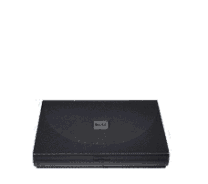|
ADVERTISE HERE HARDWARE: SAN, Rackmount Servers, RAID controllers SOFTWARE:
CRM,
Management Information Systems Services: Data Recovery, ERP more... Technologies: VoIP, CAD more... |
|
NEW ARTICLES IN
GLOSSARY
|
|
|
Electronic Document Management SystemsDefinition: An Electronic Document Management System (EDMS) is a
computer system or suite of programs designed to store and track electronic
documents and other media.
EDM systems (from vendors such as Meridio, Hyperwave and IBM) typically provide support for a range of processes related to the storage, tracking and retrieval of electronic documents. The primary concept behind an EDMS is that it can act as a standalone system, performing all the tasks necessary to manage the electronic documents of an enterprise. The field of EDMS is led by several organisations, including the Association for Information and Image Management (AIIM) and the Association for Records Management and Administrators (ARMA). Data Capture Paper documents can be entered onto an EDMS by simply scanning images of them. The EDMS will prompt the user to provide information for its appropriate storage. Documents already in an electronic format can also be entered in the system – again, aided by storage information provided by the user. Document Retrieval Individual electronic documents are assigned metadata to assist in their correct filing and tracking. Metadata typically includes the date of storage and the identity of the user storing it. In addition to these basic details, EDM systems attach additional data (compiled through either user input or an automatic extraction from the document content) to allow users to locate documents quickly using keyword searches. Documents must be indexed correctly to ensure that retrieval is possible. Integration In order to make best use of documents, EDM systems often standardise access to other applications, enabling data to be easily transferred between the EDMS and applications such as word-processors and e-mail. Standards such as the Open Document Management API (ODMA) allow this sort of easy transfer and avoid the difficulties that arise from non-conforming file formats. Workflow EDM systems enable the automatic routing of documents to the user responsible for working on them. Enterprises rely on documents to be processed efficiently through a step-by-step process. Unfortunately, when documents are manually pushed through this process there is the risk that they can be lost or overlooked. Workflow applications ensure that documents are forwarded to the appropriate user automatically at specified times, alerting the user of the necessity to process them. This system ensures the smooth flow of documents through the enterprise. Version Control An integral part of the EDMS software is the ability to track and manage multiple versions of the same information. In order to correctly manage the ongoing development of digital data it is necessary to create and correctly store multiple versions of data as it progresses through the system.
EDM systems manage version control in one of two ways: In many cases it is necessary for several users to collaborate simultaneously on the same document. In these cases it would be unproductive to lock access to a single user, so instead the software enables concurrent use. CVS systems work around the problem of concurrent access by storing a master copy of the document, allowing users to make changes only to the most recent version. Multiple users can then submit their modifications (also known as checking in) to the most recent version, while the master copy remains unchanged. Multiple users are expected to regularly use the ‘update’ command of the software, which will refresh their copy of the document to incorporate the most recent changes. Security
In any enterprise it is vital that the security of electronic documents is
appropriately managed. EDM systems ensure that access to the system is
restricted only to those with the correct access permissions, both to ensure the
integrity of data and to reduce the number of documents presented to the user
only to those documents that are relevant to his or her role. |

